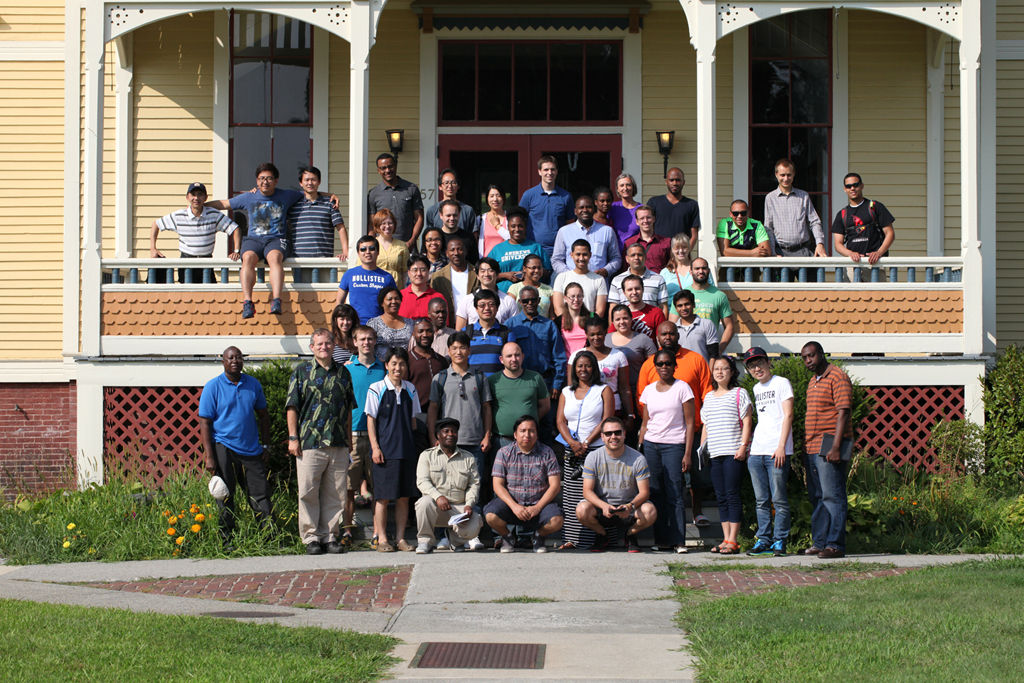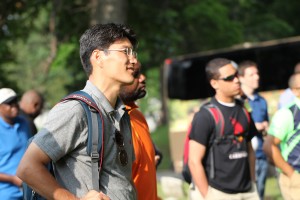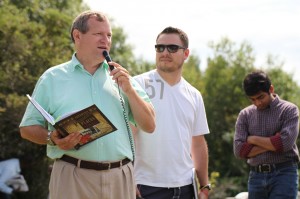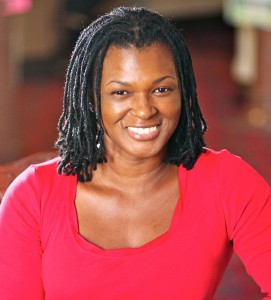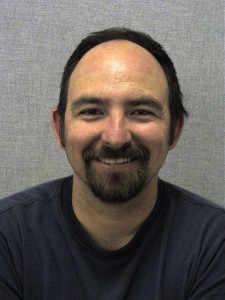A bus full of students and a handful of spouses toured Adventist History sites in New York and New England August 4-11, 2014. This is an annual event for students of the Seventh-day Adventist Theological Seminary. Many find it a way to connect with the roots of the Seventh-day Adventist church. Marc Mettelus reflected on his experience and said, “I was very blessed by the tour, and the ministry that the tour provided to me.”
In Rochester, New York, the study tour felt like it really started because on this day participants heard a story related to a place while being in that actual place. Previous to this point all the information given had been while traveling on the bus. The first stop was Mount Hope Cemetery in Rochester, New York. In this cemetery are the graves of Mary Andrews, Angeline Andrews, and Carrie Andrews. Nathaniel White and Anna White are also buried here. The character of John Nevins Andrews, the namesake of Andrews University, was drawn, and highlighted were his dedication to scholarship and personal sacrifice and self-depreciation. Later that same day we drove by the home of John Nevins Andrews in North Lancaster, Massachusetts, as well as visited Founder’s Hall at Atlantic Union College, in South Lancaster, Massachusetts.
On the following day the study tour went to Old Sturbridge Village and sites related to Joseph Bates. Old Sturbridge Village puts people in the mindset of life in the 1830s. A few years earlier than the events we focus on during the tour, but a good place to start for getting a feel for how daily life was lived for our Adventist pioneers.
Joseph Bates, one of the co-founders of the Seventh-day Adventist church, grew up in Fairhaven, Massachusetts. His childhood home was near enough to see the ocean-going vessels in the harbor and it is easy to understand how Bates developed a longing to go to sea. Bates spent 20-plus years at sea and retired from being a captain of his own ship with a comfortable fortune. The tour went to the home that he built upon his retirement and later sold to fund the spread of the Millerite Advent message. Along the rocky water’s edge where the old Fairhaven Bridge once stood, participants heard the story of how the Sabbath being the seventh day of the week came to Millerites and to Joseph Bates. Bates then wrote three tracts on the Sabbath, one of which James and Ellen White read and were convinced to start keeping the seventh day of the week as the Sabbath.
The next day the tour went to Maine, and the house was pointed out where James and Ellen White were living when they accepted the Sabbath. This was in Gorham, Maine, while the Whites were living with Ellen’s parents in 1847. Gorham, Maine, is also where Ellen was born. She spent many of her growing up years in Portland, Maine. The tour visited many sites in Portland, but because of a fire in the 1860s and construction of newer buildings many of the sites are uninspiring. For example, the spot where Ellen Harmon was baptized is now a parking lot because the city reclaimed land from the bay.
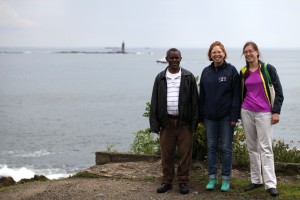
Rama Jean, Amy Moreno, and Sarah Sinz pose with one of the lighthouses in Casco Bay while visiting Fort Williams Park in Cape Elizabeth, Maine.
The day following Maine was spent in New Hampshire. First, was a visit to the Washington, New Hampshire, Seventh-day Adventist church, which features the Sabbath Trail on its property. After a morning of stories and songs, followed by lunch, a walk along the Sabbath Trail, and taking pictures of the graves of the individuals featured in the stories earlier in the day, the tour went to the childhood home of Uriah Smith and his sister Annie Smith. Annie’s grave is in a cemetery nearby where she is buried near family members.
That evening, the group ate at the Country Life Restaurant in Keene, New Hampshire. This is an independent, Adventist owned, vegan restaurant. Many on the tour considered it to be the best meal of the trip. Christian Ponciano, a Master of Divinity student at the Seventh-day Adventist Theological Seminary, told the proprietor that it was “the best vegan food I have ever tasted.” It was a learning experience for many who were not familiar with the health ministry of these restaurants. It served as an anchor for the lectures about the health message given to the Seventh-day Adventist Church.
Sabbath was spent at the William Miller Farm and chapel. Elder Nix presented the story of William Miller in the chapel. With passion and exhortation he described Miller’s conversion. He held up a cannon ball as a visual aid in describing the war of 1812 and the battle in which Miller took part. Later Elder Nix presided over the tour through Miller’s home.
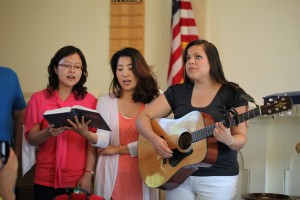
Suh Young Shin, Shin Ju Kim, and Mariesa Tinkham sing, “When He Cometh,” at the Roosevelt Seventh-day Adventist Church.
Sunday morning the group was at the Roosevelt Seventh-day Adventist Church. Dr. Burt had to compress the lectures for the trip because of his need to leave the tour on Sunday night, rather than travel back with the group and lecture on Monday. Because of the time his flight left from Rochester, New York, the time spent at the Hiram Edson farm was shortened and we did not eat supper there but ended up taking it with us and eating it in the parking lot of the hotel.
The last day was characterized by the interstate closing near Buffalo, New York, due to a fuel tanker accident with a cab fire. After the road re-opened we continued on our journey which was interspersed with rain. We were thankful for safe travels and the good weather we had experienced over the last week.
Katy Wolfer, Special Projects Manager / Katy enjoyed the strong musical bent of the participants on the 2014 study tour.
In Their Own Words …
Andria Stewart
Anibal Santeliz

